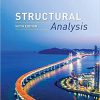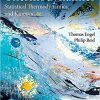(eBook PDF) STAT2: Modeling with Regression and ANOVA 2nd Edition
$50.00 Original price was: $50.00.$35.00Current price is: $35.00.
(eBook PDF) STAT2: Modeling with Regression and ANOVA 2nd Edition – Instant Download
(eBook PDF) STAT2: Modeling with Regression and ANOVA 2nd Edition – Digital Ebook – Instant Delivery Download

Product details:
- SBN-10 : 1319054072
- ISBN-13 : 978-1319054076
- Author: Ann Cannon; George W. Cobb; Bradley A. Hartlaub; Julie M. Legler; Robin H. Lock; Thomas L. Moore; Allan J. Rossman; Jeffrey A. Witmer
STAT2 introduces students to statistical modeling beyond what they have learned in a Stat 101 college course or an AP Statistics course. Building on basic concepts and methods learned in that course, STAT2 empowers students to analyze richer datasets that include more variables and address a broader range of research questions.
Other than a working understanding of exponential and logarithmic functions, there are no prerequisites beyond successful completion of their first statistics course. To help all students make a smooth transition to this course, Chapter 0 reminds students of basic statistical terminology and also uses the familiar two-sample t-test as a way to illustrate the approach of specifying, estimating, and testing a statistical model.
Table contents:
Chapter 0 What Is a Statistical Model?
0.1 Model Basics
0.2 A Four-Step Process
Unit A: Linear Regression
Chapter 1 Simple Linear Regression
1.1 The Simple Linear Regression Model
1.2 Conditions for a Simple Linear Model
1.3 Assessing Conditions
1.4 Transformations/Reexpressions
1.5 Outliers and Influential Points
Chapter 2 Inference for Simple Linear Regression
2.1 Inference for Regression Slope
2.2 Partitioning Variability—ANOVA
2.3 Regression and Correlation
2.4 Intervals for Predictions
2.5 Case Study: Butterfly Wings
Chapter 3 Multiple Regression
3.1 Multiple Linear Regression Model
3.2 Assessing a Multiple Regression Model
3.3 Comparing Two Regression Lines
3.4 New Predictors from Old
3.5 Correlated Predictors
3.6 Testing Subsets of Predictors
3.7 Case Study: Predicting in Retail Clothing
Chapter 4 Additional Topics in Regression
4.1 Topic: Added Variable Plots
4.2 Topic: Techniques for Choosing Predictors
4.3 Cross-validation
4.4 Topic: Identifying Unusual Points in Regression
4.5 Topic: Coding Categorical Predictors
4.6 Topic: Randomization Test for a Relationship
4.7 Topic: Bootstrap for Regression
Unit B: Analysis of Variance
Chapter 5 One-way ANOVA and Randomized Experiments
5.1 Overview of ANOVA
5.2 The One-way Randomized Experiment and Its Observational Sibling
5.3 Fitting the Model
5.4 Formal Inference: Assessing and Using the Model
5.5 How Big Is the Effect?: Confidence Intervals and Effect Sizes
5.6 Using Plots to Help Choose a Scale for the Response
5.7 Multiple Comparisons and Fisher’s Least Significant Difference
5.8 Case Study: Words with Friends
Chapter 6 Blocking and Two-way ANOVA
6.1 Choose: RCB Design and Its Observational Relatives
6.2 Exploring Data from Block Designs
6.3 Fitting the Model for a Block Design
6.4 Assessing the Model for a Block Design
6.5 Using the Model for a Block Design
Chapter 7 ANOVA with Interaction and Factorial Designs
7.1 Interaction
7.2 Design: The Two-way Factorial Experiment
7.3 Exploring Two-way Data
7.4 Fitting a Two-way Balanced ANOVA Model
7.5 Assessing Fit: Do We Need a Transformation?
7.6 USING a Two-way ANOVA Model
Chapter 8 Additional Topics in Analysis of Variance
8.1 Topic: Levene’s Test for Homogeneity of Variances
8.2 Topic: Multiple Tests
8.3 Topic: Comparisons and Contrasts
8.4 Topic: Nonparametric Statistics
8.5 Topic: Randomization F-Test
8.6 Topic: Repeated Measures Designs and Data Sets
8.7 Topic: ANOVA and Regression with Indicators
8.8 Topic: Analysis of Covariance
Unit C: Logistic Regression
Chapter 9 Logistic Regression
9.1 Choosing a Logistic Regression Model
9.2 Logistic Regression and Odds Ratios
9.3 Assessing the Logistic Regression Model
9.4 Formal Inference: Tests and Intervals
Chapter 10 Multiple Logistic Regression
10.1 Overview
10.2 Choosing, Fitting, and Interpreting Models
10.3 Checking Conditions
10.4 Formal Inference: Tests and Intervals
10.5 Case study: Attractiveness and Fidelity
Chapter 11 Additional Topics in Logistic Regression
11.1 Topic: Fitting the Logistic Regression Model
11.2 Topic: Assessing Logistic Regression Models
11.3 Randomization Tests for Logistic Regression
11.4 Analyzing Two-Way Tables with Logistic Regression
11.5 Simpson’s Paradox
Chapter 12 Time Series Analysis
12.1 Functions of Time
12.2 Measuring Dependence on Past Values: Autocorrelation
12.3 ARIMA models
12.4 Case Study: Residual Oil
People also search:
stat2 modeling with regression and anova answers
regression and anova difference
stat2 modeling with regression and anova
linear regression and anova difference
regression model anova


